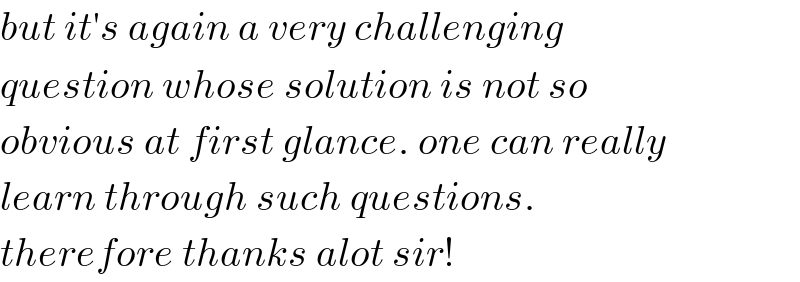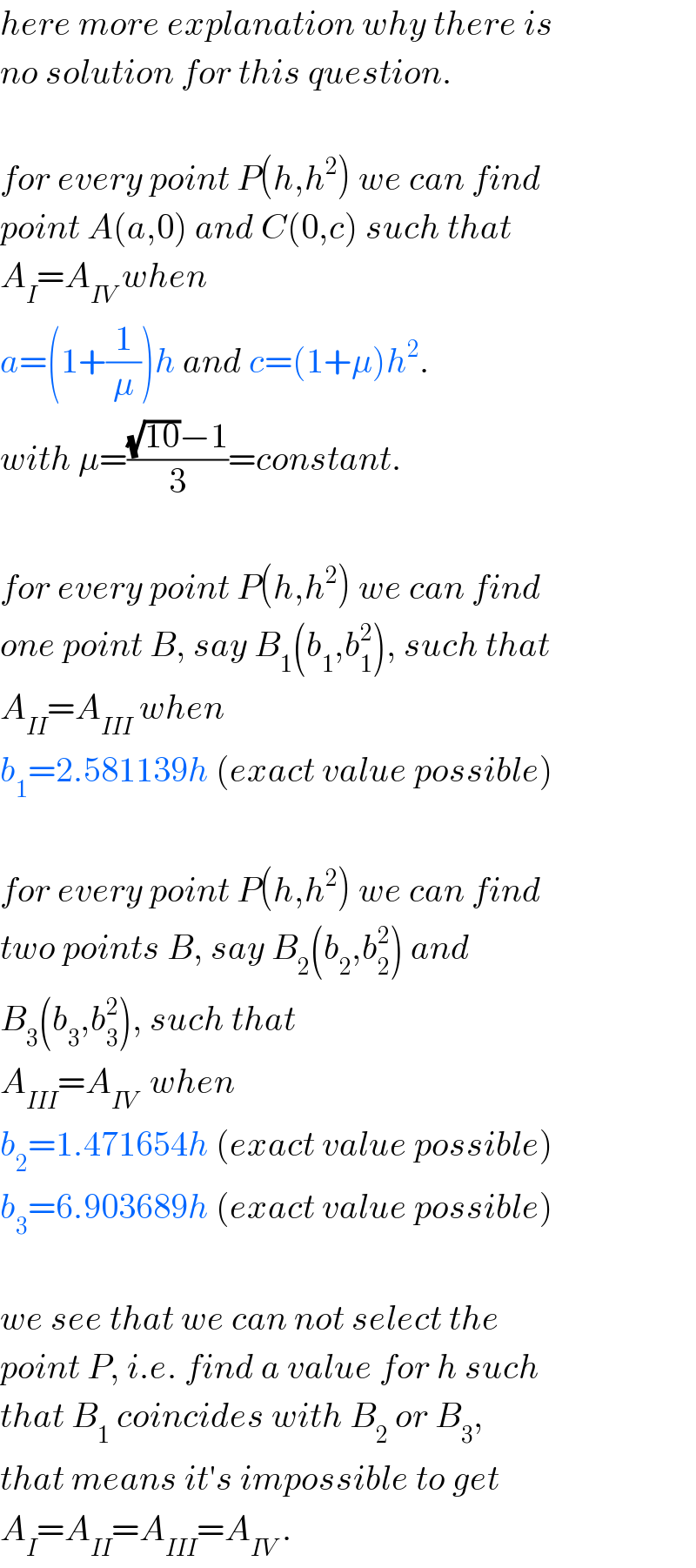
Question and Answers Forum
Question Number 79697 by ajfour last updated on 27/Jan/20

Commented by ajfour last updated on 27/Jan/20

Answered by ajfour last updated on 27/Jan/20

Commented by ajfour last updated on 27/Jan/20

Answered by mr W last updated on 28/Jan/20

Commented by john santu last updated on 27/Jan/20

Commented by mr W last updated on 28/Jan/20
![for AC i use the equation in form of y=h^2 −m(x−h). it goes through point P(h,h^2 ) [the same as D(d,d^2 ) in your workings] and has the inclination −m. such that A_I =A_(IV) we have m=((((√(10))−1)h)/3).](Q79769.png)
Commented by ajfour last updated on 28/Jan/20

Commented by mr W last updated on 28/Jan/20

Commented by john santu last updated on 28/Jan/20

Commented by mr W last updated on 28/Jan/20

Commented by mr W last updated on 28/Jan/20

Commented by mr W last updated on 28/Jan/20

